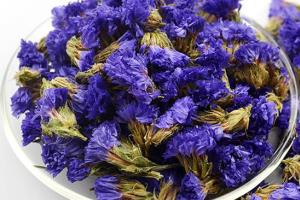What should be paid attention to in the planting techniques of potted vegetables?
As a new type of planting technology, potted vegetables have been widely accepted by the public. many people prefer to decorate the house with potted vegetables to make the courtyard of the house colorful and green, so what are the planting techniques of potted vegetables? what should you pay attention to when planting? The following will be introduced by the editor.

Common varieties of potted vegetables
1. Fruit vegetables: colored sweet pepper, dwarf tomato, cherry tomato, hard fruit tomato, ornamental eggplant, small chili, pocket watermelon and all kinds of pumpkin, melon, zucchini, okra and fragrant eggplant.
2. Colorful vegetables: leaf beet, all kinds of lettuce, purple back sunflower, perilla, purple sunflower and kale, etc.
3. Green leaf health vegetables: lettuce, parsley, Panax notoginseng, ground skin, Beijing water vegetables, pearl vegetables, kale, basil, leaf wolfberry, leek and vegetable jute, etc.
4. Root vegetables: fennel, cherry radish, fruit turnip, turnip, miniature radish and carrot.
2. Planting conditions of potted vegetables
Potted vegetables should be planted in greenhouses, plastic greenhouses and other protected areas, and the tuyere and doorway should be sealed with an anti-insect net. Should be equipped with micro-spraying or tap watering facilities. Choose and buy flowerpots of appropriate size, you can choose plastic flowerpots, mud pots or wooden pots, especially valuable varieties can also choose purple sand pots and colored glaze ceramic pots, potted leeks can choose foam boxes, but mud pots should be covered with a plastic pot when they are sold. The following principles should be followed in the selection of matrix, fertilizers and pesticides.
1. The matrix used must be cleaned and thoroughly disinfected. Comprehensive nutrition, no diseases and insect pests. Generally choose peat, vermiculite, perlite, mushroom waste and clean river sand as the matrix.
2. Try not to use chemical fertilizer, use more organic fertilizer such as hemp residue and peanut cake, and can also use fully mature organic fertilizer made from fermented bacteria and cow and sheep manure as the main raw material.
3. Some microorganisms, such as rhizobia, photosynthetic bacteria and phosphorus-solubilizing bacteria, are allowed to promote the full utilization of nutrients in vegetables through the activities of these beneficial bacteria.
4. Chemical pesticides are not allowed, and plant and mineral biological pesticides are allowed to control diseases and insect pests.
3. Planting techniques of potted vegetables
1. Reasonable selection of flowerpots: according to the characteristics of vegetables, select sufficient flowerpots for root development, such as melons and fruits with well-developed roots, need large flowerpots, eggplant fruits can be slightly smaller.
2. Arrange the suitable sowing time: arrange the sowing and planting date according to the growth period and consumer demand, so that the planted varieties can be sold in holidays and tourist seasons.
3. Adjust the appropriate temperature, light and humidity: fruits and leafy vegetables require different temperature and humidity. It should be planted separately and managed according to different temperature, humidity and light.
4. timely pruning: vegetables are required not only to grow well, but also to be beautiful and artistic, dwarf crops should be pruned in time to remove yellow leaves, and tomatoes, melons and fruits should be built into frames of various shapes with bamboo or steel bar. to make it climb and grow. It is necessary to carry out thinning and vine management, get rid of lateral branches, and remove the top to a certain extent, so as to inhibit vegetative growth, reduce nutrient consumption and promote results.
5. Fertilizer and water management should be scientific: using tasteless organic fertilizer, timely watering and water control, so that its root system is developed, the growth is strong, and the result is good. To ensure the supply of fertilizer and water, potted vegetables have limited nutrition, and fertilizer and water must be poured frequently.
The above is the life experience shared by the editor with you, hoping to help you better cultivate potted vegetables and lead a healthy and green life.
Related
- Wuhan Hospital Iron Tree Blooming Result Was Instantly Frightened by the Gardener Master
- Which variety of camellia is the most fragrant and best? Which one do you like best?
- What is the small blue coat, the breeding methods and matters needing attention of the succulent plant
- Dormancy time and maintenance management of succulent plants during dormancy
- Minas succulent how to raise, Minas succulent plant pictures
- What are the varieties of winter succulent plants
- How to raise succulent plants in twelve rolls? let's take a look at some experience of breeding twelve rolls.
- Attention should be paid to water control for succulent plants during dormant period (winter and summer)
- Watering experience of twelve rolls of succulent plants
- Techniques for fertilizing succulent plants. An article will let you know how to fertilize succulent plants.



